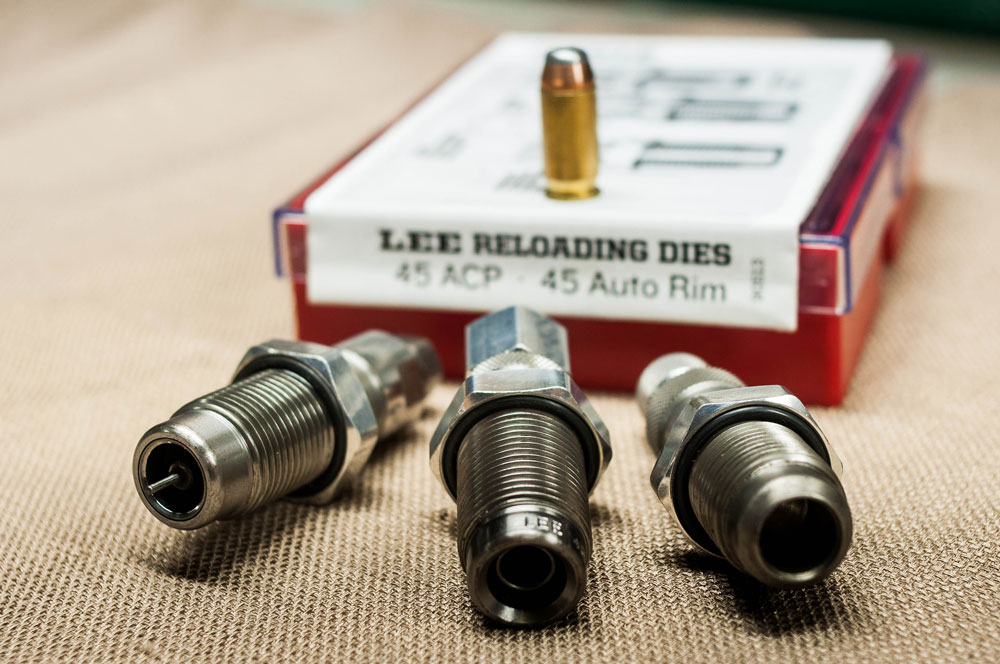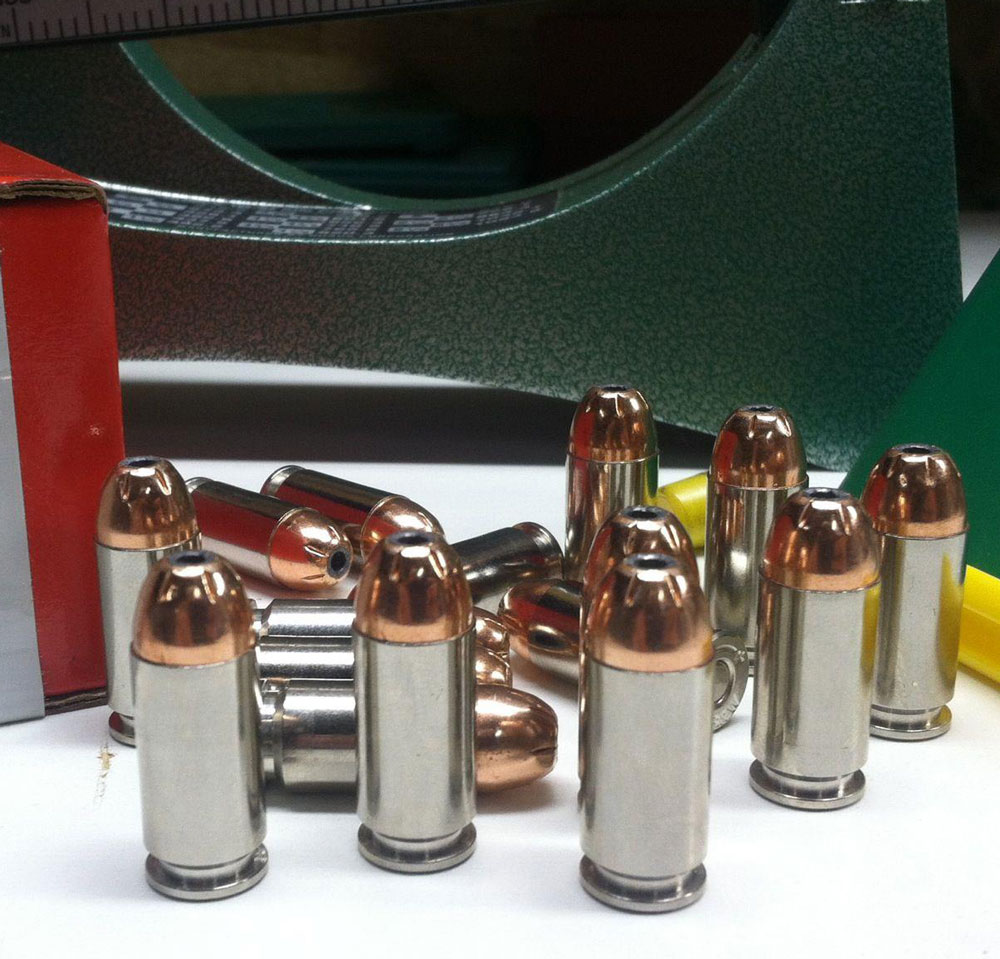

Cartridge crimping, that final stage of handgun cartridge assembly. Whether done as a separate operation, or as a part of the bullet seating process, one simple fact remains – it must be done.
There are two distinct types of cartridge crimps: Roll crimping and taper crimping.
In the handgun world, it is a pretty clear distinction. Roll crimping is best used on the revolver cartridges, and taper crimping is the way to go for semi-automatic pistol cartridges. Here’s the why.
Cartridges designed for use in a revolver use some sort of a rim to properly headspace the case in the cylinder. Think .38 Special, .357 Magnum, .45 Colt, .44 Remington Magnum. This guaranteed headspacing allows the reloader to “roll” the case mouth around the cannelure of the bullet, ensuring that the bullet will not move during recoil. This also gives us a consistent overall length if you roll crimp on the cannelure.
I will note that a roll crimp should only be used with bullets that have a cannelure; if you try to roll crimp on a bullet without one, you risk bulging the case mouth, and it will not fit properly in the cylinder. We’ll get back to how to crimp a bullet with no cannelure for revolver use in a second.
The bullet seating die for most pistol cartridges can be adjusted to give a good, solid roll crimp. Read the die set instruction carefully, and follow the directions. It may take a few tries to get the proper crimp, and I usually make a dummy round, with no powder or primer, to use as a guide should the die come out of adjustment.
Those cartridges that work well in the semi-automatic pistols can’t be roll crimped, because those cartridges headspace on the case mouth rather than a rim, which most lack. You see, rimmed cartridges (generally speaking) don’t feed well from a pistol magazine, so the autoloaders usually employ a rimless design. Think .45 ACP, 9mm Luger, .40 S&W, .380 Automatic.
The rimless design needs to headspace on something other than the rim, of which there is none, and the lack of a shoulder (as in a rifle cartridge) leaves only the case mouth. If we were to roll crimp, we would compromise the squared case mouth for headspacing. Yet, we still need to hold the bullet firmly in the case.

This is where the taper crimp method comes into play. It squeezes the sides of the case wall tightly against the bullet, and effectively prevents the bullet from moving, while maintaining the nice square case mouth that allows the cartridge to headspace.
A taper crimp can solve the problem I previously mentioned, where revolver cases use a bullet with no cannelure, yet need to be crimped. No bulged cases, no mess. Taper crimp and fire away!
Most companies that make quality reloading dies will have a taper crimp die available for purchase. If you’re serious about your pistol’s performance, I highly suggest you invest in one.
Stay crimpy, my friends.

Next Step: Get your FREE Printable Target Pack
Enhance your shooting precision with our 62 MOA Targets, perfect for rifles and handguns. Crafted in collaboration with Storm Tactical for accuracy and versatility.
Subscribe to the Gun Digest email newsletter and get your downloadable target pack sent straight to your inbox. Stay updated with the latest firearms info in the industry.

![Best Concealed Carry Guns In 2025 [Field Tested] Wilson Combat EDC X9S 1](https://gundigest.com/wp-content/uploads/Wilson-Combat-EDC-X9S-1-324x160.jpg)


![Best 9mm Carbine: Affordable PCCs [Tested] Ruger Carbine Shooting](https://gundigest.com/wp-content/uploads/Ruger-Carbine-Shooting-100x70.jpg)
![Best AR-15: Top Options Available Today [Field Tested] Harrington and Richardson PSA XM177E2 feature](https://gundigest.com/wp-content/uploads/Harrington-and-Richardson-PSA-XM177E2-feature-100x70.jpg)
